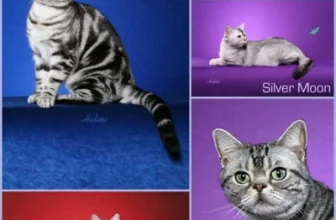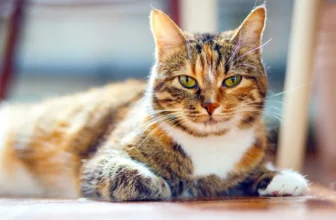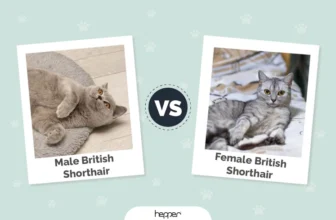Have you ever struggled with training your American Shorthair? Do you find yourself becoming frustrated with ineffective training techniques? Look no further than positive reinforcement training. This method of training has proven to be a highly effective and humane way to teach new behavior and discourage negative behavior. In this article, we’ll discuss what positive reinforcement training is, why it works, and how to utilize it specifically for American Shorthairs. Get ready to see your furry friend thrive with positive reinforcement training.
What is Positive Reinforcement Training?
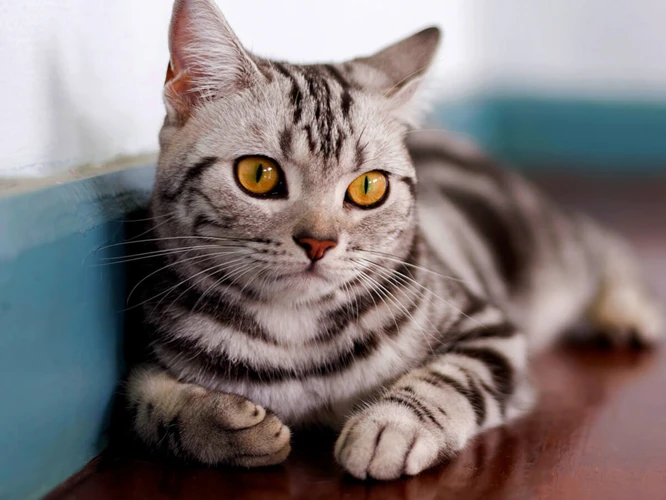
Positive reinforcement training is a technique that uses rewards to encourage desirable behavior in animals. It involves rewarding a behavior immediately after it occurs which increases the likelihood of that behavior being repeated in the future. This method is based on the premise that positive reinforcement is more effective and humane than punishment. It helps to foster a positive relationship between the pet and the owner and can lead to better outcomes in behavior modification.
How it Works
Positive reinforcement works by associating a desirable behavior with a positive outcome. This desired outcome can be in the form of treats, toys, or affection. For example, if an American Shorthair cat is trained to use their scratching post instead of the furniture, they will receive a reward immediately after they use it. This reward reinforces the behavior of using the scratching post and increases the likelihood of it being used again in the future.
The Benefits
One of the biggest benefits of positive reinforcement training is that it does not involve punishment which can lead to fear and anxiety in animals. This training method instead focuses on rewarding good behavior, which can lead to an increase in confidence and trust between the pet and their owner.
Positive reinforcement training can be used to teach a variety of behaviors that are beneficial for American Shorthairs such as litter box habits, leash training, and obedience commands. Additionally, it helps provide mental stimulation which can prevent boredom and reduce stress levels.
Positive reinforcement training is a proven and effective way of teaching American Shorthairs desirable behaviors in a humane way. By focusing on positive outcomes, owners can reinforce good habits while creating a positive relationship with their pet.
How it Works
Have you ever wondered how positive reinforcement training can make a difference in your American Shorthair’s behavior? This training works by rewarding your cat for good behavior, encouraging them to repeat it. It’s built on the principle that behavior that is rewarded is likely to be repeated. Positive reinforcement training involving treats, praise, or affection can help you improve your cat’s behavior and strengthen your bond with them. While it may take time and patience to achieve the desired results, the effort is worth it. In the next sections, we’ll go over the benefits of this training and how it can be effective for American Shorthairs.
The Benefits
Positive reinforcement training offers a wide range of benefits for American Shorthairs. Not only does it provide an effective way to teach your cat new commands, but it can also help strengthen your bond with your furry friend and reduce negative behavior.
One of the biggest benefits of positive reinforcement training is that it can create a positive association with training sessions. By using treats and other rewards, your American Shorthair will learn to associate training with a fun and enjoyable experience. This can help reduce any anxiety or stress they may feel during training sessions.
Table: Benefits of Positive Reinforcement Training
| Benefits | Description |
|---|---|
| Increased Attention Span | Positive reinforcement training requires your American Shorthair to remain focused throughout the training session, which can help increase their attention span in other areas of their life. |
| Improved Behavior | By rewarding good behavior, positive reinforcement training can help reduce negative behavior like scratching furniture or biting. |
| Strengthens Bond | Positive reinforcement training creates a positive association with you and your American Shorthair, building a stronger bond between you. |
| Reduced Anxiety | A positive training experience can help reduce anxiety and stress your American Shorthair may feel during training sessions. |
| Increased Confidence | By rewarding your American Shorthair for good behavior, it can help increase their confidence, making them more willing to try new things. |
Additionally, positive reinforcement training can help provide mental stimulation for your American Shorthair. Cats, especially indoor ones, require mental stimulation to keep their minds active and healthy. Incorporating training sessions into your American Shorthair’s daily routine can help provide that stimulation.
Finally, positive reinforcement training can benefit anxious cats. By providing a positive and non-threatening environment, positive reinforcement training can help reduce anxiety and promote calm and relaxed behavior.
Positive reinforcement training provides plenty of benefits for your American Shorthair. It can increase their attention span, reduce negative behavior, strengthen your bond, reduce anxiety, provide mental stimulation, and benefit anxious cats.
Why Positive Reinforcement Training is Effective for American Shorthairs
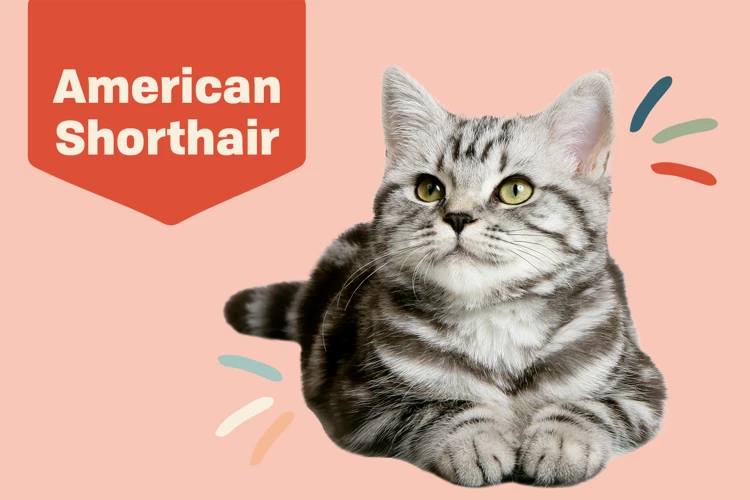
Understanding American Shorthair Behavior
To understand why positive reinforcement training is effective for American Shorthairs, it’s important to first understand their behavior. American Shorthairs are intelligent cats that are very independent and can be quite stubborn at times. They are also active and playful, which means they need plenty of physical and mental stimulation to keep them happy and healthy.
The Role of Positive Reinforcement
Positive reinforcement training is based on the principles of rewarding good behavior and ignoring bad behavior. When it comes to American Shorthairs, positive reinforcement is effective because it allows them to learn and understand what is expected of them without feeling threatened or intimidated. This method of training uses treats, toys, and praise to encourage good behavior and motivate the cat to continue behaving in a positive manner. By using this approach, you can establish a positive relationship with your cat and create an environment of trust and cooperation.
Positive reinforcement training is particularly effective for American Shorthairs because they respond well to rewards. These cats are food-motivated, and using treats as a reward can be a powerful incentive for them. They are also highly trainable and eager to learn new things, making positive reinforcement training an ideal method for teaching them new behaviors and commands.
How to Implement Positive Reinforcement Training with Your American Shorthair
To implement positive reinforcement training with your American Shorthair, it’s important to first set goals and establish clear expectations. Decide on the behaviors that you want to encourage, such as using the scratching post instead of the furniture, and determine the appropriate rewards for each behavior.
Choose Rewards
Rewards can come in many forms, including treats, toys, praise, and playtime. It’s important to choose rewards that your cat finds motivating and enjoyable. Treats should be small and healthy, and toys should be safe and appropriate for your cat’s age and personality.
Use Consistency and Timing
Consistency and timing are also important factors in positive reinforcement training. Rewards should be given immediately after the desired behavior occurs, so your cat can make the connection between the behavior and the reward. Consistency is also important, as your cat needs to know what is expected of them and what behaviors will be rewarded.
Common Positive Reinforcement Training Techniques for American Shorthairs
There are several positive reinforcement training techniques that are particularly effective for American Shorthairs. Clicker training is a popular method that uses a clicker to mark the desired behavior, followed by a treat or other reward. Target training involves teaching your cat to follow a target, such as a stick or a treat, in exchange for a reward. Shaping is another method that involves gradually shaping the desired behavior over time through a series of rewards and positive reinforcement.
Addressing Negative Behavior with Positive Reinforcement Training
Positive reinforcement training can also be used to address negative behavior in American Shorthairs. Instead of punishing your cat for bad behavior, focus on rewarding good behavior and redirecting their attention to more appropriate activities. For example, if your cat starts scratching your furniture, gently pick them up and place them on the scratching post, rewarding them with a treat when they use it.
Understanding Your American Shorthair’s Limits with Positive Reinforcement Training
It’s important to understand that not all American Shorthairs will respond to positive reinforcement training in the same way. Some cats may take longer to learn new behaviors, while others may have limits to what they are capable of learning. It’s important to stay patient and maintain realistic expectations when training your cat, and remember that every cat is unique.
Final Thoughts on Positive Reinforcement Training for American Shorthairs
Positive reinforcement training is an effective and humane method for training American Shorthairs. By understanding their behavior, choosing appropriate rewards, and using consistent and timely reinforcement, you can establish a positive relationship with your cat and teach them new behaviors and commands. With patience and perseverance, you can create a happy and well-behaved feline companion.
Understanding American Shorthair Behavior
Understanding the behavior of your American Shorthair is crucial to successfully implementing positive reinforcement training techniques. After all, each cat breed has different instincts and behaviors that affect their receptiveness to different training methods. With American Shorthairs, it’s helpful to know that they are known for their intelligence, playfulness, and independence. They often enjoy being the center of attention, but may also need plenty of alone time. By taking the time to understand your American Shorthair’s unique characteristics, you can tailor your positive reinforcement training approach to suit their needs.
The Role of Positive Reinforcement
Positive reinforcement is a powerful training technique that involves rewarding desired behaviors in order to encourage their repetition. This type of training method is extremely effective with American Shorthairs and can help strengthen the bond between a cat and its owner.
Here are some key roles positive reinforcement plays in training American Shorthairs:
- Encourages Good Behavior: Instead of punishing negative behavior, positive reinforcement focuses on rewarding and encouraging good behavior. This leads to a more positive and lasting outcome in your cat’s behavior.
- Fosters Trust: By using positive reinforcement and rewarding your American Shorthair, you can earn their trust and make them feel secure. This will make training sessions more enjoyable for both you and your cat.
- Motivates your Cat: Training an American Shorthair isn’t always easy, but positive reinforcement helps motivate your cat to learn new behaviors. By providing treats and rewards, your cat will be eager to listen and learn from you.
- Prevents Anxiety: Positive reinforcement training can help prevent anxiety in American Shorthairs by creating a calm and safe learning atmosphere. By using treats and rewards, your cat will feel more comfortable and relaxed during training sessions.
By understanding the roles of positive reinforcement in training, you can use this technique to effectively train your American Shorthair. Using treats and rewards, you can encourage good behavior, motivate your cat and foster trust. This will lead to a happier and healthier relationship between you and your pet.
To learn more about using treats for training American Shorthairs check out our article Using Treats for Training AM Shorthairs. For training your American Shorthair on a scratching post see Train American Shorthair Scratching Post. And to learn more about positive reinforcement commands for American Shorthairs click here American Shorthair Positive Reinforcement Commands. Check out the benefits of positive reinforcement training for anxious cats in this article.
How to Implement Positive Reinforcement Training with Your American Shorthair
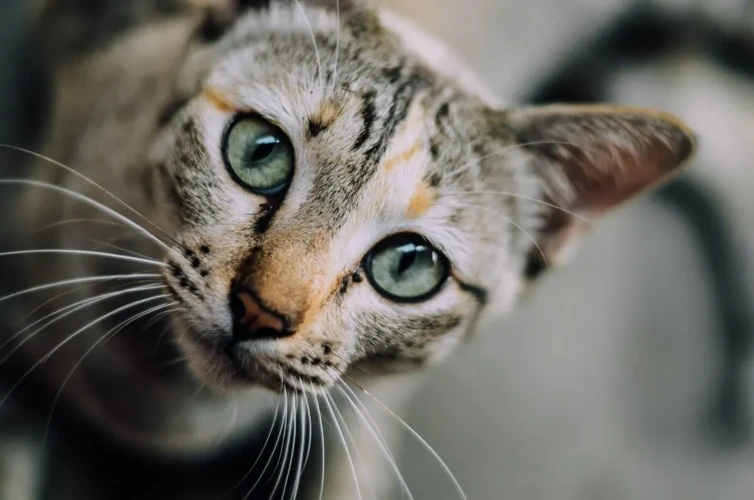
When it comes to implementing positive reinforcement training with your American Shorthair, there are a few key steps to follow. These steps include setting goals, choosing rewards, and using consistency and timing.
Set Goals
Before you begin training your American Shorthair, it’s important to set goals for what you hope to accomplish. This might include teaching your cat basic commands like sit, stay, and come, or addressing specific behavior issues like scratching furniture or jumping on counters. Setting clear goals will help you stay focused and track your progress over time.
Choose Rewards
Positive reinforcement training relies on rewards to reinforce good behavior. When choosing rewards, it’s important to consider what motivates your American Shorthair. This might include treats, toys, or verbal praise. Whatever you choose, make sure it’s something your cat values and is excited to receive.
Use Consistency and Timing
Consistency and timing are key when it comes to positive reinforcement training. Be sure to use the same commands and rewards every time you train, and make sure to reward your cat right away for good behavior. The more consistent you are, the more quickly your cat will learn.
In addition to these key steps, there are a few other tips to keep in mind when implementing positive reinforcement training with your American Shorthair. For example, be sure to keep training sessions short and frequent, rather than long and infrequent. This will help keep your cat engaged and interested.
It’s also important to be patient and persistent. Positive reinforcement training takes time and effort, and not every cat will learn at the same pace. By staying patient and consistent, you can help your American Shorthair achieve their training goals in a positive and rewarding way.
Set Goals
When it comes to positively reinforcing behavior in your American Shorthair, setting clear and specific goals is crucial. By defining your training objectives, you can create a roadmap for success and track your progress along the way. However, it’s important to approach goal-setting with some flexibility and a willingness to adjust as needed based on your cat’s individual needs and progress. In this section, we’ll explore some tips for setting effective training goals that will help you and your feline friend achieve success in your positive reinforcement training journey.
Choose Rewards
When choosing rewards for positive reinforcement training with your American Shorthair, it is important to consider their individual preferences and motivations. This can range from their favorite treats to their favorite toys. Using rewards that are of high value to your cat will make training more effective and enjoyable for both you and your furry friend.
Consider using the table below as a guide for choosing the right rewards for your American Shorthair:
| Reward | Description |
|---|---|
| Treats | A tasty snack that your American Shorthair loves. Choose small, soft treats that can be easily consumed and won’t interrupt training sessions. |
| Toys | Choose toys that your American Shorthair finds exciting, like a wand toy or a catnip-filled mouse. Make sure the toy can be used in a training session and won’t distract them from the task at hand. |
| Physical Affection | Sometimes, a simple pat on the head or a scratch behind the ears can be a highly effective reward for your American Shorthair. It provides positive reinforcement and shows them your love and affection. |
| Verbal Praise | Don’t underestimate the power of verbal praise! Your American Shorthair wants to make you happy, so giving them positive feedback, like a simple “good job”, can be a great reward during training. |
Remember to use rewards consistently and to provide them immediately after the desired behavior is exhibited. This will reinforce the positive behavior and motivate your American Shorthair to continue to excel in their training.
Use Consistency and Timing
When it comes to using positive reinforcement training with your American Shorthair, consistency and timing are crucial factors that impact the success of the training. To ensure success, it is essential to make sure that your cat receives rewards promptly and consistently when exhibiting the desired behavior.
Consistency: One of the keys to successful positive reinforcement training is consistency. Consistency in behavior and reward means that you should reward your American Shorthair every time they exhibit the desired behavior. If you reward them sometimes and not other times, it can be confusing for them, and they may not understand what behavior earns them the treat. To keep your training consistent, you can maintain a log of your cat’s behavior and progress on paper or use an app that allows you to track their behavior and rewards.
Timing: Timing is critical when it comes to rewarding your American Shorthair with positive reinforcement. If you wait too long to reward them, they may not associate the reward with the behavior you want them to exhibit. On the other hand, if you reward them too soon, they may not have fully performed the desired behavior. It is essential to provide rewards immediately after they exhibit the desired behavior, so they can accurately link the behavior and reward.
To help you stay on track with consistency and timing, you may want to use an online or offline tool to set reminders or alarms to provide timely rewards when your American Shorthair demonstrates positive behavior. You may also want to consider using a visual signal, like a thumbs up or a clicker, to indicate when your cat has exhibited the desired behavior successfully.
Consistency and Timing Table:
| Consistency | Timing |
|---|---|
| Be consistent in rewarding every time your American Shorthair demonstrates desired behavior | Provide a reward immediately after they exhibit positive behavior |
| Use a behavior and reward log to track progress | Consider using an app to set reminders for timely rewards |
| Provide a visual signal to indicate when your cat has done the desired behavior accurately | Be careful not to reward too soon or too late |
Using positive reinforcement training with your American Shorthair requires consistency and timing. Consistently rewarding the desired behavior and providing a reward promptly after exhibiting positive behavior is crucial to success. With patience and consistency, you can help your American Shorthair learn new behaviors and reinforce positive ones.
Common Positive Reinforcement Training Techniques for American Shorthairs
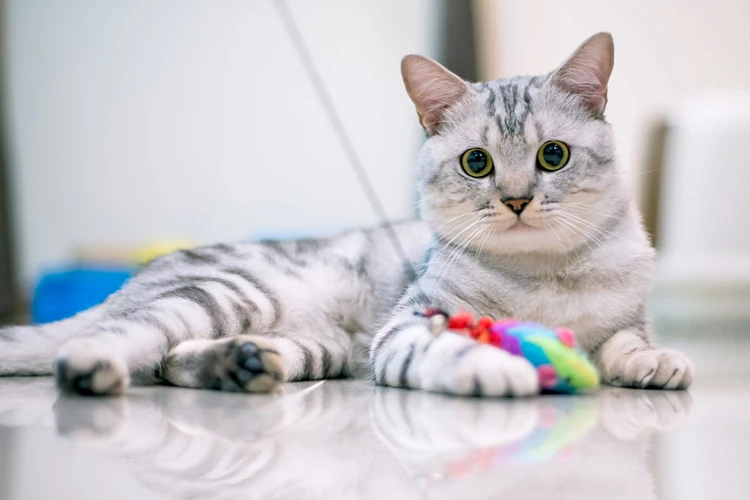
Positive reinforcement training techniques are the cornerstone of training American Shorthairs, as these techniques reinforce desirable behaviors and discourage negative ones. Below are some common positive reinforcement training techniques that can be used with American Shorthairs and other cat breeds.
Clicker Training: One of the most popular positive reinforcement techniques, clicker training involves using a clicker to create a distinct sound that is associated with a treat or reward. The cat is trained to associate the sound with the reward, which reinforces good behavior. Clicker training can be used to teach a variety of behaviors, such as coming when called or sitting on command.
Target Training: This technique involves using a target as a way to direct the cat towards a specific behavior. A target can be anything from a stick with a ball on top to a laser pointer dot on the floor. The cat is trained to follow the target, which reinforces the behavior. This technique can be used to teach cats to jump, crawl, or even high five.
Shaping: Shaping involves reinforcing small steps that lead to a larger behavior. For example, if you want to teach a cat to jump through a hoop, you would first reinforce the cat for walking towards the hoop, then for putting its paw on the hoop, and so on. This technique encourages cats to think and learn on their own, and can be used to teach a wide range of complex behaviors.
By using these common positive reinforcement training techniques with consistency and patience, owners can create a bond with their American Shorthair built on trust and mutual respect. It is important to remember that every cat is different, and some may respond better to certain techniques than others. It is recommended to try out different techniques to find the one that works best for your American Shorthair.
Clicker Training
For a unique and effective way to train your American Shorthair, consider using clicker training. This method of positive reinforcement training involves using a clicker to make a distinct sound, signaling to your cat that they have completed a desired behavior and will receive a reward. Clicker training has been proven to be highly effective and can be a fun and engaging way to bond with your furry friend. Let’s take a closer look at how clicker training works and how you can implement it with your American Shorthair.
Target Training
Target training is a popular positive reinforcement technique that can be used when training American Shorthairs. This training method revolves around teaching your cat to touch a specific target, such as a stick or a handheld target device, with their paws, nose, or any other body part. Here are the steps to successfully implement target training with your American Shorthair:
- Step 1: Start by introducing the target to your cat. Allow your cat to sniff and inspect the target to get familiar with it.
- Step 2: Hold the target close to your cat’s nose and give the command “touch.”
- Step 3: When your cat touches the target with its nose, immediately give a reward such as a treat or verbal praise.
- Step 4: Repeat this process several times until your cat gets the hang of it. Gradually increase the distance between your cat and the target, and eventually, start to move the target around to make it more challenging.
Target training is an effective way of training American Shorthairs as it helps to improve their agility, coordination, and concentration. Target training can also help to develop a stronger bond between you and your furry friend. With consistent training, your American Shorthair will start to associate the “touch” command with a reward, making it easier to teach them more advanced tricks and behaviors.
It’s important to note that every cat is unique and may require different amounts of time and effort to learn target training. This is why it’s crucial to remain patient and positive throughout the training process. With persistence and practice, any American Shorthair can thrive with target training and become an even more joyful and intelligent companion.
Shaping
Shaping is another positive reinforcement training technique that can be effective for American Shorthairs. This technique involves breaking down the desired behavior into small steps, and then reinforcing each step along the way until the behavior is fully achieved.
Here are the steps for implementing shaping with your American Shorthair:
- Identify the desired behavior: First, you need to decide what behavior you want to shape. It should be a behavior that is achievable for your cat and is relevant to your training goals.
- Break down the behavior: Next, you need to break down the behavior into small, achievable steps. For example, if you want to teach your cat to climb on a specific piece of furniture, you might break the behavior down into steps such as approaching the furniture, putting one paw on the furniture, putting two paws on the furniture, etc.
- Reinforce each step: After you’ve broken down the behavior, you need to reinforce each step along the way. This means giving your cat a reward (such as a treat or praise) each time they successfully complete a step toward the desired behavior.
- Gradually increase the difficulty: Once your cat has successfully completed a few steps, you can gradually increase the difficulty of the behavior by requiring them to complete more steps before getting a reward. For example, you might ask for three paw placements on the furniture before giving a reward instead of just two.
- Practice and repetition: Shaping requires practice and repetition. You’ll need to work with your cat consistently to reinforce each step of the behavior until they can do the entire behavior successfully.
With shaping, it’s important to remember to only reinforce the behavior you’re currently working on. Don’t reward behaviors that you’re not actively trying to shape. Additionally, make sure your rewards are consistent and meaningful to your cat. With patience and consistency, shaping can be a powerful positive reinforcement training technique for your American Shorthair.
Addressing Negative Behavior with Positive Reinforcement Training

When addressing negative behavior, it’s important to remember that positive reinforcement training is not about punishing your American Shorthair for bad behavior. Instead, it’s about redirecting their attention towards good behavior through positive reinforcement. Let’s take a closer look at how you can effectively address negative behavior in a positive way.
Avoiding Punishment: When your cat exhibits negative behavior, it’s easy to become frustrated and want to punish them. However, punishment can often lead to fear and mistrust in your cat, which can worsen the behavior you’re trying to correct. Instead of using punishment, focus on redirecting their behavior towards more positive actions. This can involve using toys to redirect their attention or providing a designated scratching post to redirect scratching behavior.
Encouraging Good Behavior: One effective way to address negative behavior is to encourage good behavior instead. When you notice your American Shorthair engaging in positive behaviors, be sure to reward them promptly with treats, praise, or playtime. By doing so, you’re positively reinforcing the behavior you want to see more of, and your cat will be more likely to repeat it.
For example, if your cat scratches the designated post instead of your furniture, provide them with a treat and praise. By rewarding the positive behavior, you’re encouraging them to continue using the designated post for scratching.
It’s important to remember that cats thrive on positive reinforcement, and addressing negative behavior should be done in a positive and encouraging way. By avoiding punishment and focusing on redirecting behavior towards positive actions, you can effectively train your American Shorthair to exhibit good behavior without causing any negative effects on their mental or emotional health.
Avoiding Punishment
When it comes to training a cat, it’s easy to feel frustrated when they exhibit negative behaviors. However, it’s important to remember that punishing your American Shorthair for misbehavior can do more harm than good. Instead, focus on using positive reinforcement techniques to address undesirable actions. This approach can help your cat learn what is expected of them while maintaining a positive rapport between you and your pet. Let’s explore why avoiding punishment is crucial for successful positive reinforcement training with American Shorthairs.
Encouraging Good Behavior
When it comes to positive reinforcement training for American Shorthairs, encouraging good behavior is a crucial aspect of the process. But what exactly does this entail? Here are some tips on how to encourage good behavior in your furry friend:
1. Consistently reward good behavior
As mentioned earlier, positive reinforcement relies on rewarding good behavior. When your American Shorthair exhibits desirable behavior, consistently reward them with a treat or verbal praise. This will reinforce the behavior, increasing the likelihood that they will continue to exhibit it.
2. Use a marker word or sound
Using a marker word or sound, like “good” or clicking a training clicker, can help your cat understand that they have done something right. This allows you to more precisely communicate which behaviors you are rewarding.
3. Be specific with your praise
When praising your cat, be specific about what they have done well. Instead of simply saying “good cat,” try saying “good sit” or “good use of the scratching post.” This helps your cat understand exactly what behavior they are being rewarded for.
To help understand the process of encouraging good behavior with positive reinforcement, let’s take a look at the following example:
| Behavior | Reward |
|---|---|
| Sits on command | Treat and verbal praise |
| Uses scratching post | Treat and verbal praise |
| Angrily scratches furniture | No reward, redirection to scratching post |
In this example, we see that when the cat sits on command or uses the scratching post, they are rewarded with a treat and verbal praise. However, when they scratch the furniture in anger, they receive no reward, but are redirected to the scratching post. This reinforces the idea that good behavior is rewarded and negative behavior is not.
Remember, positive reinforcement training is all about rewarding desired behaviors and encouraging good behavior in your American Shorthair. Be patient and consistent in your efforts, and you will no doubt see progress over time.
Understanding Your American Shorthair’s Limits with Positive Reinforcement Training
When it comes to positive reinforcement training for American Shorthairs, it’s important to remember that your feline friend has their own limits and abilities. Understanding these will help you tailor your training to the individual needs of your cat, leading to more successful outcomes.
Staying Patient
It’s essential to stay patient with your American Shorthair and not expect immediate or perfect responses to your training. Cats, like humans, have different learning speeds and abilities. It’s also important to remember that they have their own unique personalities, which can affect how well they respond to certain training techniques.
If you find your cat struggling to pick up certain behaviors, it’s okay to take a step back and re-evaluate your approach. You may need to break the behavior down into smaller, more manageable steps, or try a different technique altogether. Above all, avoid getting frustrated or punishing your cat for not meeting your expectations.
Maintaining Realistic Expectations
It’s crucial to maintain realistic expectations when positive reinforcement training your American Shorthair. While they are intelligent and trainable, cats have their own limits when it comes to what they can learn and how quickly. They also have innate behaviors, like scratching and hunting, that may be difficult to train out of them.
If you’re hoping to teach your American Shorthair a specific behavior, do your research first to ensure it’s something that is achievable and appropriate for their breed and personality. Some cats may excel at certain tricks or activities, while others may find them too challenging or not enjoyable.
Positive reinforcement training is a fantastic way to build a strong bond with your American Shorthair and encourage good behavior. By understanding their limits and providing consistent, targeted training, you can help your feline friend become a happy and well-behaved member of your household.
Staying Patient
Managing your expectations is key to success in positive reinforcement training with American Shorthairs. As with any training program, patience is crucial. Your cat may take longer to learn certain behaviors or may not respond well to certain rewards. It’s important to stay calm and positive throughout the process to maintain a healthy and happy relationship with your furry pet. Let’s explore some tips for staying patient during the positive reinforcement training process.
Maintaining Realistic Expectations
When it comes to positive reinforcement training for American Shorthairs, it’s essential to maintain realistic expectations of what your cat can accomplish. Here are some ways to consider when setting realistic expectations for your feline companion:
1. Understand your cat’s personality: Each cat is unique and has a different personality. Some cats may learn certain behaviors faster than others. It’s crucial to be patient and accepting of your cat’s individuality.
2. Be consistent: Consistency is key to successful positive reinforcement training. However, it is not only important to remain consistent while training your cat, but also in the way you interact with them outside of training. Avoid confusing them with mixed signals, stick to the same cues, and ignore unwanted behaviors.
3. Set realistic goals: Set small, achievable goals that will help your cat progress towards the ultimate behavior you desire. Celebrate each accomplishment, no matter how small, but remember that not every training session will be successful.
4. Recognize progress: Acknowledge the progress your cat has made during their training. Sometimes progress may go unnoticed, but it’s important to remain positive and acknowledge every small improvement.
By keeping these things in mind, you’ll be able to maintain realistic expectations for your American Shorthair during their positive reinforcement training. Remember that every cat is different, and each will learn at a different pace. However, with patience and consistency, you can achieve great results with your feline companion.
Final Thoughts on Positive Reinforcement Training for American Shorthairs
After implementing positive reinforcement training with your American Shorthair, it’s important to stay patient and maintain realistic expectations. Every cat has their own unique personality and learning style, so some may pick up on training faster than others. It’s important to always focus on progress rather than perfection.
Remember that positive reinforcement training is all about creating a positive bond between you and your cat. By using rewards and praise, you can strengthen your relationship while also helping your cat learn new behaviors.
It’s also important to continue training your American Shorthair throughout their life. The more you reinforce positive behaviors, the more likely they are to become permanent habits. Consistency and repetition are key to successful training.
If you encounter any issues or negative behaviors during training, it’s important to avoid punishment. Instead, focus on redirecting their attention to positive behaviors and rewarding good choices. It’s also important to address any underlying medical or environmental factors that may be causing negative behavior.
Positive reinforcement training is an effective and humane way to train your American Shorthair. By understanding their behavior and using rewards and praise, you can create a positive bond with your cat while also helping them learn desired behaviors. Remember to stay patient, maintain realistic expectations, and address any issues with positive and gentle redirection.
Frequently Asked Questions
What is the difference between positive reinforcement and punishment?
Positive reinforcement involves rewarding good behavior, while punishment involves punishing bad behavior. Positive reinforcement is considered more effective and humane than punishment.
Can positive reinforcement training be used on older cats?
Yes, positive reinforcement training can be used on cats of any age. However, it may take longer for older cats to learn new behaviors due to their established habits.
What rewards are best for positive reinforcement training?
The best rewards for positive reinforcement training are ones that the cat finds highly desirable, such as treats, playtime, or affection.
Is positive reinforcement training more effective than negative reinforcement?
Yes, positive reinforcement training is considered more effective than negative reinforcement, as it teaches the cat desired behaviors through rewards rather than fear or avoidance.
Can positive reinforcement training be used to stop negative behaviors?
Yes, positive reinforcement training can be used to stop negative behaviors by providing rewards for desired behaviors and ignoring or redirecting negative behaviors.
How long does it usually take to see results from positive reinforcement training?
The time it takes to see results from positive reinforcement training will vary based on the cat’s personality and behaviors, but typically takes several weeks to several months of consistent training.
Is it possible to use positive reinforcement training for complex behaviors like leash training?
Yes, positive reinforcement training can be used for complex behaviors like leash training, as long as the training is broken down into smaller, achievable steps and rewards are given for progress toward the final goal.
What are some potential drawbacks to using punishment-based training?
Punishment-based training can lead to anxiety, fear, and aggression in cats, as well as damage the human-animal bond and create an unsafe living environment.
Can positive reinforcement training be used to help with behavior issues like litter box problems?
Yes, positive reinforcement training can be used to address behavioral issues like litter box problems by rewarding the cat for using the litter box and ignoring or redirecting unwanted behaviors.
Is it necessary to use a clicker for positive reinforcement training?
No, a clicker is not necessary for positive reinforcement training, but it can be a helpful tool in marking desired behaviors and communicating with the cat.




